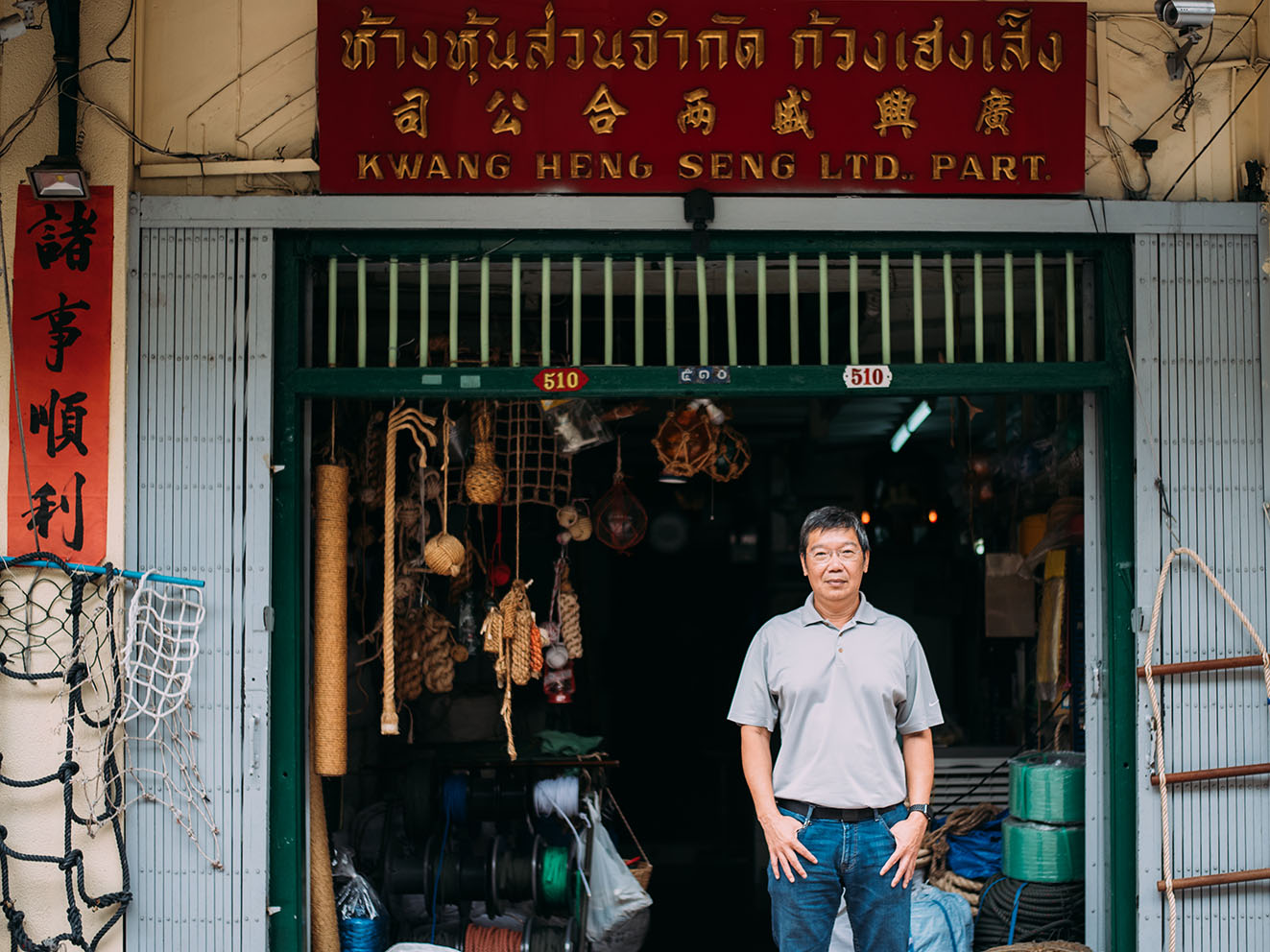When I was sixteen, my trip to Bangkok then, captivated to the point that after returning I drew my own maps of Bangkok to make sense of this chaotic megacity. People could consider me a weird nerd and I was pretty alone with my passion. Little did I know that 20 years on I would find my Thai-Chinese counterpart in the alleys of Bangkok’s Chinatown who has ever since been an inspiration to me – Hence I call him: The Sithlord of Chinatown – Khun Somchai (he thinks the Siths are cooler than the Jedi).
Khun Somchai is a Sampeng (main alley of Chinatown) native and has been on a mission to explore and understand his Teochew Chinese roots and the roots of his community. Not only does he peel away the layers of Chinatown’s history but his passion to do so is also driven by the purpose to elevate the status of this last piece of authentic Bangkok.
I would describe him as a connector of generations and a cultural decoder, tracing the meaning of names, images, stories and analysing ancient maps to tell us who we are. His curiosity became his passion, his passion became his expertise and it build his reputation to be a leader and a Go-to person for Chinatown.
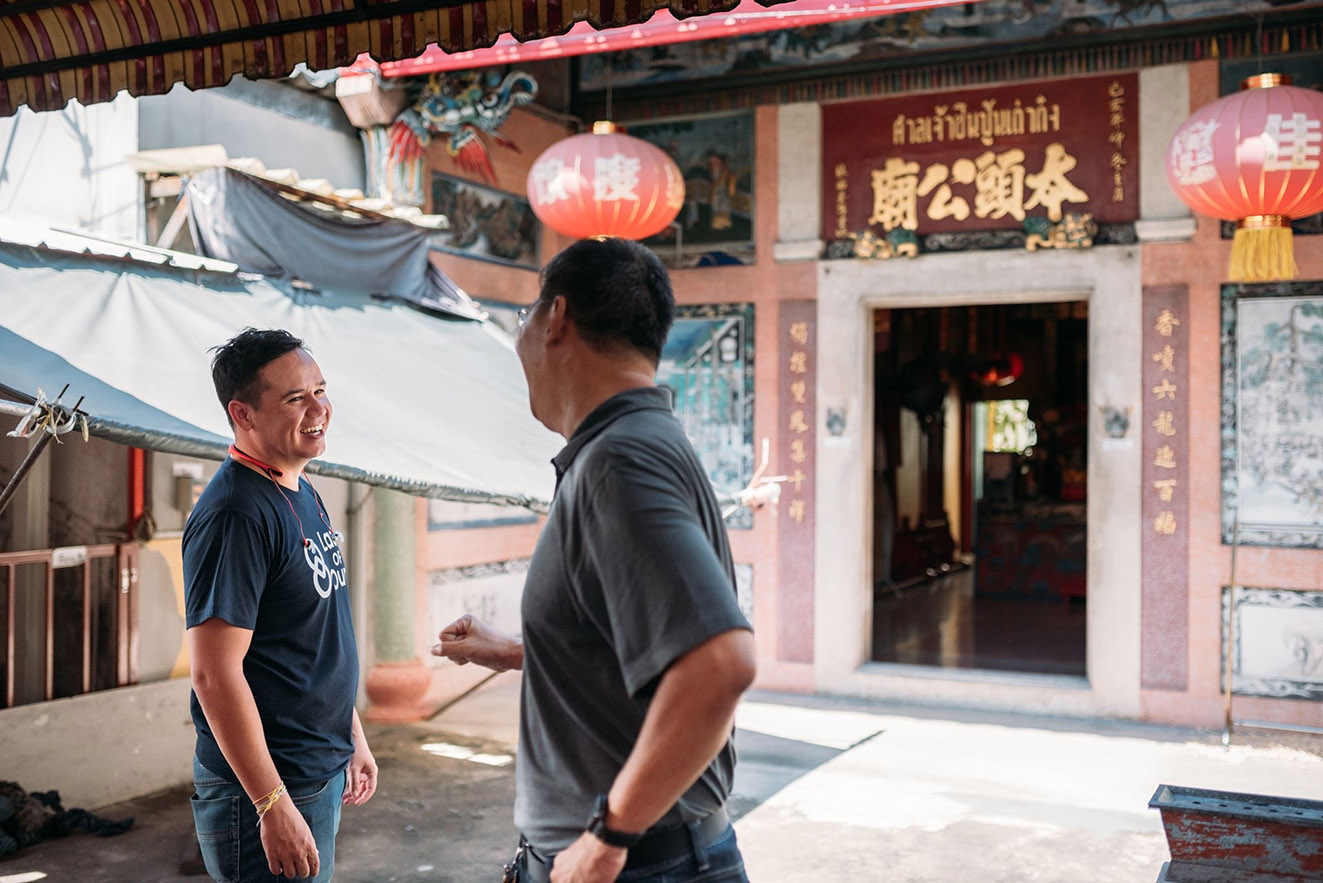
My counterpart and Sithlord when it comes to Chinatown exploration, mapping, learning about and sharing our cultural roots.
Decoding the origins of Bangkok’s Chinatown
I haven’t even made myself comfortable on his office chair yet but I’m already flooded with new updates about what’s going on in Chinatown. Each time, it almost feels as if don’t know where to begin to catch up on what we have been up to.
I’ve always been interested how he acquired such a wealth of knowledge. He’s not a full-time historian but a local entrepreneur who runs a rope shop a stone-throw from the river. It’s a legacy of the days when Sampeng was the main port of Thailand.
Maps, the super weapon for explorers
I read many books but the map became my super power. I use maps and old pictures and explore along the trails of old maps. What is this place? I make notes. I take pictures. I compare maps and old pictures and I must find the evidence that matches with the places in my sources.
I wondered where the oldest shrines in Chinatown were and found that the oldest shrines were all in the center of Sampeng where the first settlers settled. In those days they were not safe. They tried to build a fort to protect themselves. I can’t help but to think about the suffering during the period when Chinatown was established.
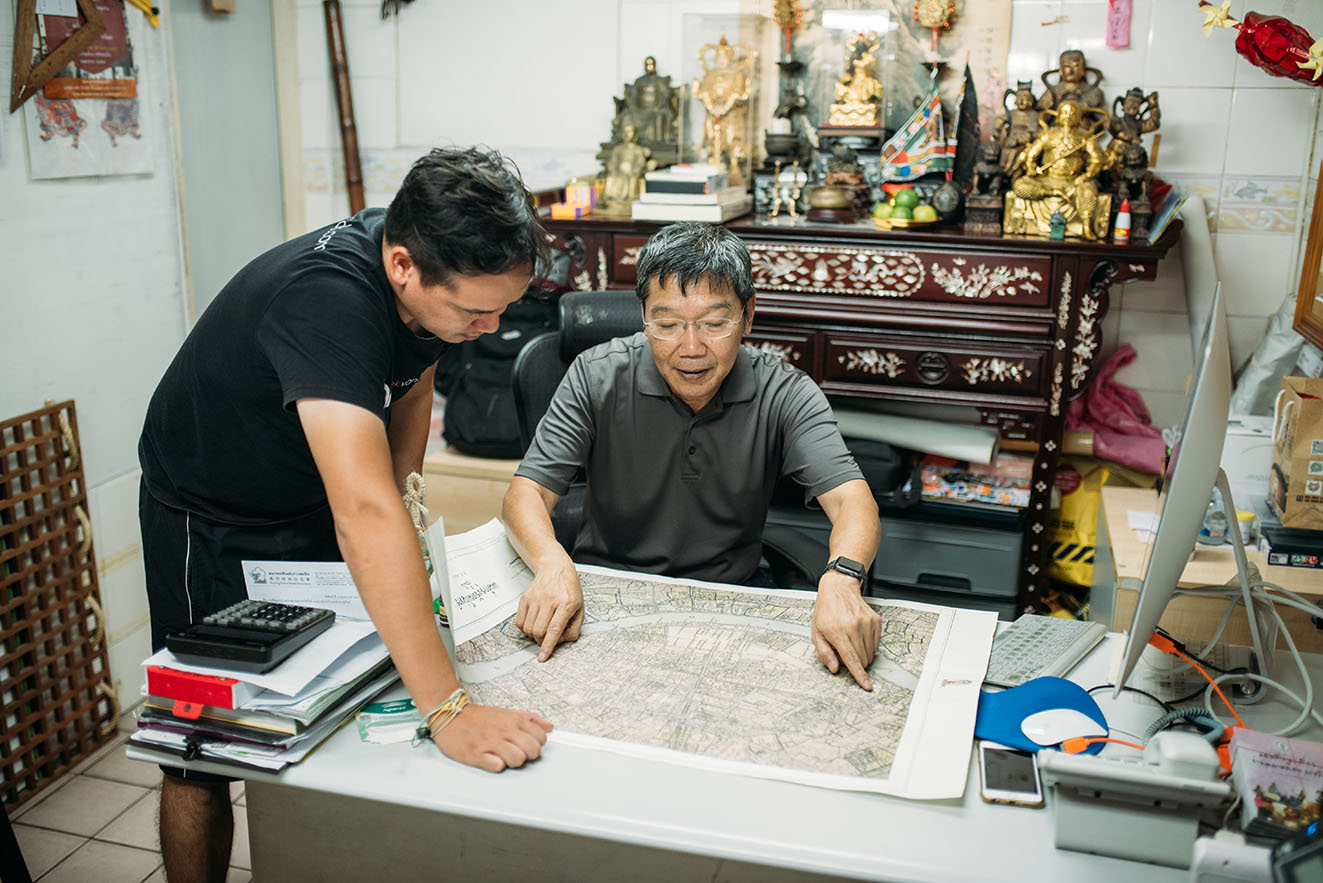
Showing me his super weapon – the map! I love maps, I made my own maps of Bangkok when I was young.
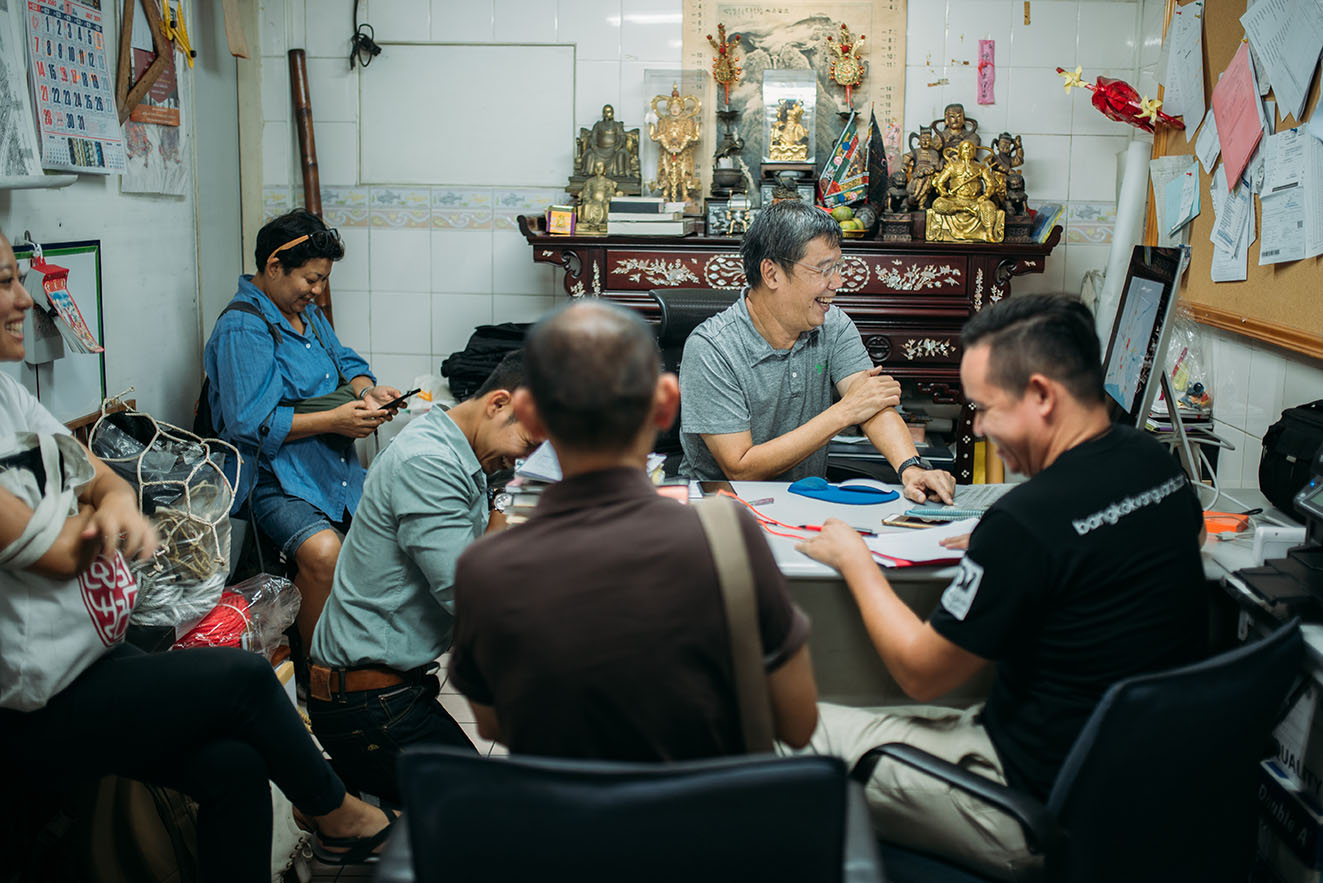
bangkokvanguards team learning, exploring and getting our dose of passion from K. Somchai.
Infectious passion
Khun Somchai is high energy and positivity. Always, some knowledge bombs up his sleeves, some new maps, graphics and images that solve the riddle of Chinatown’s story. A trip to K. Somchai’s office feels like back in those days in school when I went on a class trip. However, here, we’re seriously keen to learn new things.
Do you see these two small canals here? What was their purpose? They were there for Sampeng’s defence. Now there are two roads in the same spot. The hierarchy and patterns of alleys and canals in and around the centre indicates the Chinese concept of a balanced city.
“It’s so much fun. It’s like decoding Chinatown. I’m a decoder.”
I walk, I explore, I take pictures and I read. I’m passionate about it. You don’t have to be an archaeologist or historian, you can do it yourself. Everybody can be a historian.
I’m still learning new things and if I don’t find anything new then I have to remake it with new techniques or technologies. Just like the remake of movies. What’s even more fascinating now is that I‘m in search for my own life. When I find new details about the history, I also find a little bit about myself inside that place.
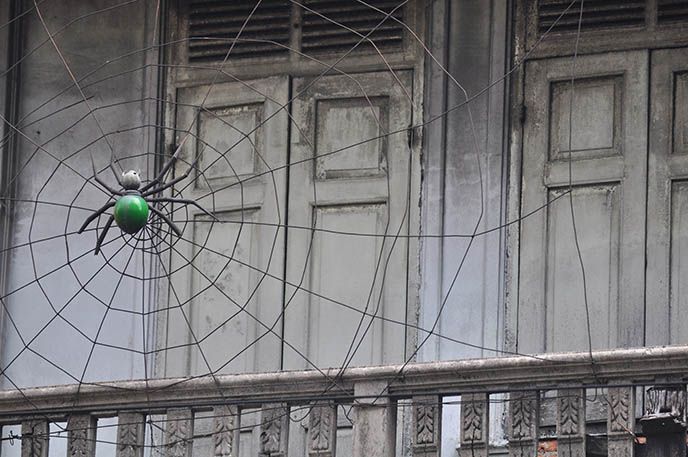
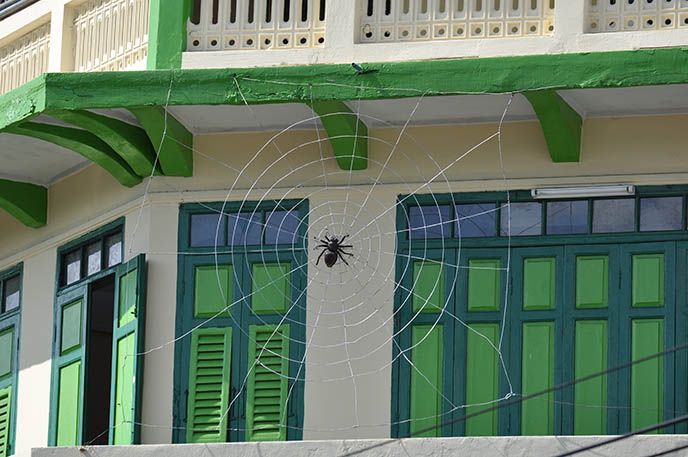
We used to have two buildings in Chinatown that were decorated with a big spider sitting in the middle of a spiderweb. I bought a new camera and took better quality pictures with unique details before the buildings were torn down.
Passing on the knowledge
How did I become a historian? I don’t think it’s that special. I get all this information because others before me did the same thing. Like me, they researched and transferred their knowledge from generation to generation. We always say, in the good old days things were better. TV programs were better, food was better and buildings were nicer. But that’s just my generation’s view point and that’s ok.
I create a lot of content because I love my community and because I think it’s my duty to pass it on to the next generation but it’s up to them whether they think it’s interesting. The old will always compete with the new. The question is how do you pass on the knowledge to the young people? I don’t want to write any books. I think we should change the format to video and put it on YouTube. I love this kind of thing and the young generation loves videos.
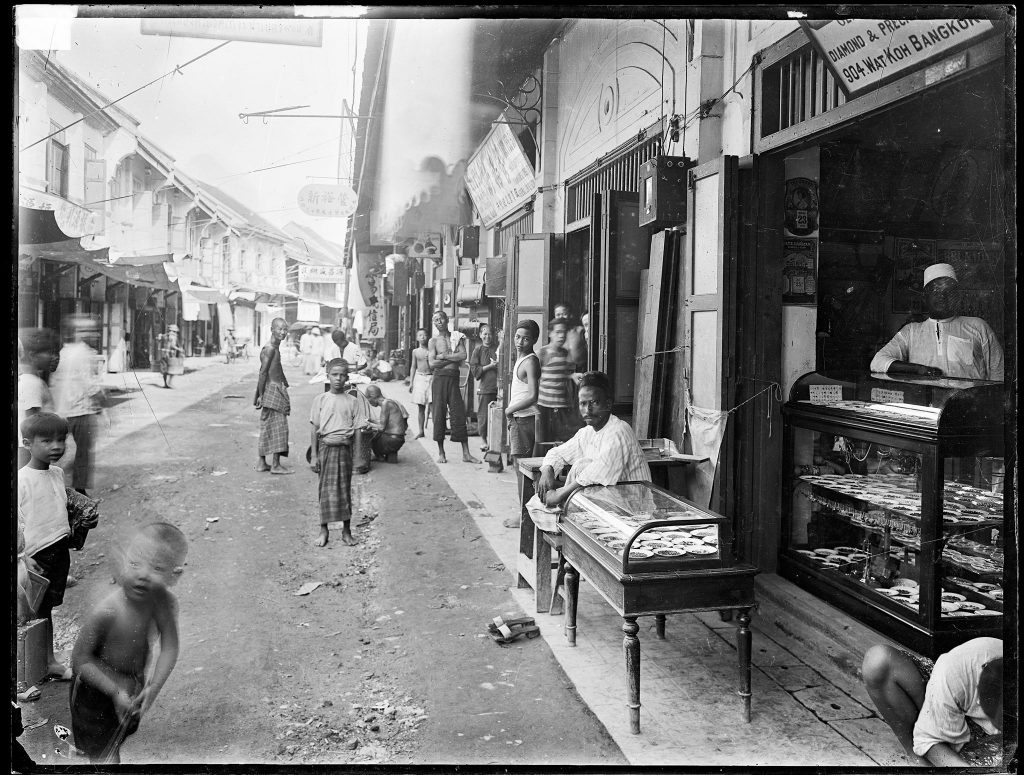
The section of Sampeng where K. Somchai lives in the early 1900’s
No exploration on an empty stomach
Street food is a big thing for many people and one of the first things that come up when we think of Chinatown. But compared to the food culture of the past, Chinatown’s importance is going down.
Yaowarat Road used to be the entertainment hub of Bangkok. There were theatres, night clubs and many high-quality restaurants but today it’s just street food. We have only one or two good restaurants from the old days left. You want to see the future? You need to know your past.
There are a lot of cooking techniques to create high quality meals in Chinese cuisine. My grandfather would shake his head if he saw you grilled something. Today, you’ll find a lot of seafood BBQ places on Yaowarat Road (Chinatown’s main road). But if you look at China, you will find grilled food only in a few places. How do you make the prawns taste great? You have to steam it. Food changes from generation to generation. What my generation loved may not be good for the next generation.
60 years plus and still serving the old guard in Sampeng and Song Wat. Pee Lek and Guay Jub Song Wat.
My uncle always said to me that if my mom was still alive, she would be very proud of me and also surprised because I was the one who actually refused his Chinese cultural roots. My mom taught me a lot about my culture but to me it was just so complicated. My interest in my parents’ culture started when I overheard a professor talking his students about the history of Song Wat Road. I was born here and I grew up here but I have never heard any of the things the professor was talking about.
So, I questioned some of his information and he asked me: “Who are you?” Where are you from? What degree do you have? Archaeology? When he asked me who are you? I went back home and wondered, who am I?
So, I started reading and creating an archive of historic images of Chinatown. Before my mother passed away, she left me a few books about the Chao Jo culture. I found them to be a big treasure and I saw that my doubts I had with the professor were justified.
I have now more than 1,000 books and more than 10,000 old images in my archive. The professor knew things from his perspective but it didn’t reflect real life or the local perspective. Professors don’t know everything and even the books got some things wrong.
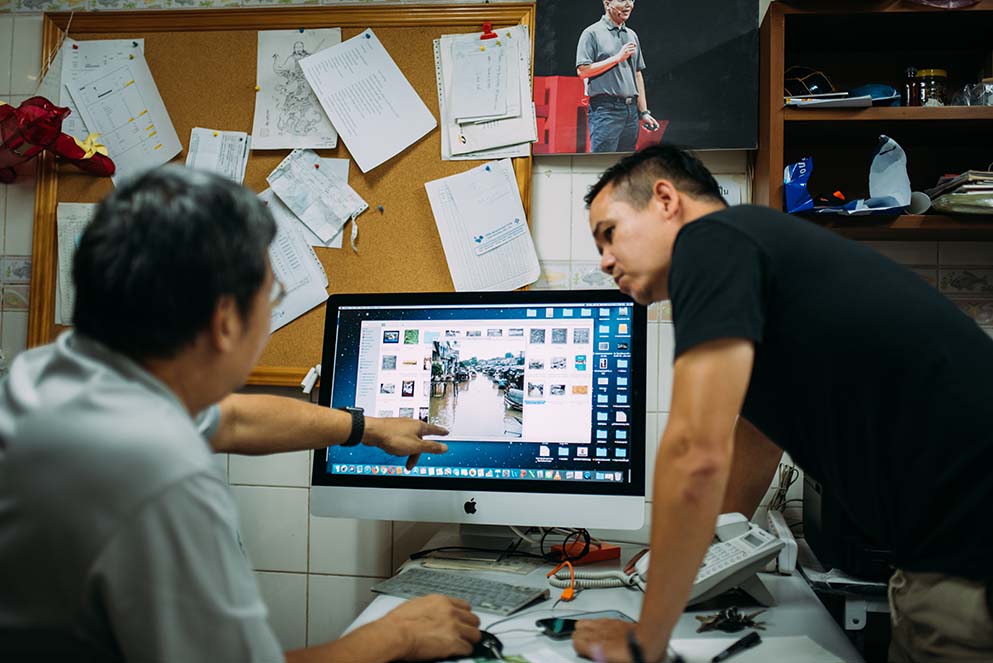
Learning about my city from the Sithlord of Chinatown
They say I’ve become a leader of Chinese culture and some people think I’m a nerd but actually I’m learning from you. I have my own perspectives but you have to be open and listen to everyone. If you think differently, then I want to know why? People have different things they love about Sampeng, so I can learn from them as well.
Chinatown’s identity of the future
When Bangkok celebrates the 250th anniversary of its founding, what will be the story of the Chinese? I dream of a master plan for Chinatown but that’s very difficult. The problem already starts with your own house. Do you want to keep it old or do you want to make it new? My house is about a hundred years old. The roof is leaking, there’s not enough space for the air condition and no place for the compressor.
An architect complained and said: ”Oh, why you don’t preserve your house? You placed the compressor outside, it makes your house look ugly.” So, I told him: “Look, I’m a human being. I feel hot, the same way you feel hot. If you’re an architect, then please help me decide on where to keep the compressor, so that it looks beautiful. Can you do that?” No. No idea. You can get blamed for installing glass windows because it doesn’t match with the design of your house. But how do you properly isolate your house so that it keeps the cool air inside?
They say they are academics, they have a lot of knowledge, right, but they don’t live here. Your ideas may be important to you but it’s maybe not important to the locals. I worked with many groups and you sit and discuss but it’s difficult to decide on the standards. Which color? Green or Red? How many floors, is it too high or too low? And don’t forget my compressor!
